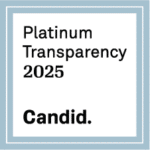
There are, of course, many considerations.
However, understanding the IRS’s required minimum distribution — or RMD — rules and how giving to charity can shield up to $105,000 this year can benefit the clients and organizations like the Community Foundation, according to Kristen Bissett, Senior Vice President, Private Wealth Management with UBS Financial Services in West Palm Beach.
Bissett volunteers on the Community Foundation’s Investment Committee, Audit Committee, and participates in its Partnering for Good learning series aimed at professional advisors.
“The blocking and tackling of money management toward the end of the year includes making sure all your clients take their RMDs so they don’t get penalized by the IRS, and then managing the tax bill as best you can,” she said.
Instead of taking the RMD as income, which would normally be taxed at the highest bracket for wealthy individuals, clients can use the $105,000 as a charitable donation, which would shield that full amount.
Bissett and her colleagues often remind clients about their RMD throughout the year. However, just as the summer turns into fall is when many of them start paying more attention to year-end strategies.
“I would say the biggest thing is actually raising awareness on the client side because not everybody knows that you can use up to $105,000 of your RMD to give to charity,” Bissett said.
In addition, Bissett has many clients that are passionate supporters of a particular cause, but they just may not know exactly which charities best address it or how to get the money in the right hands, she said. That’s where the Community Foundation comes in.
The benefits of working with the Community Foundation include its infrastructure in both identifying charities that address causes that clients care about and ensuring the money is used efficiently right here in their community.
“It feels a little more personal when it’s in your community and you can feel it,” she said.
Bissett summed up a three-legged approach to serving clients that begins with raising awareness about RMD, understanding their established giving patterns, and making sure that they know that their RMD can all go to charity.
Taking that approach, professional advisors can help clients stay up to date on IRS rules, help them achieve philanthropic goals, and save on taxes.
“It’s a win, win, win,” she said.





